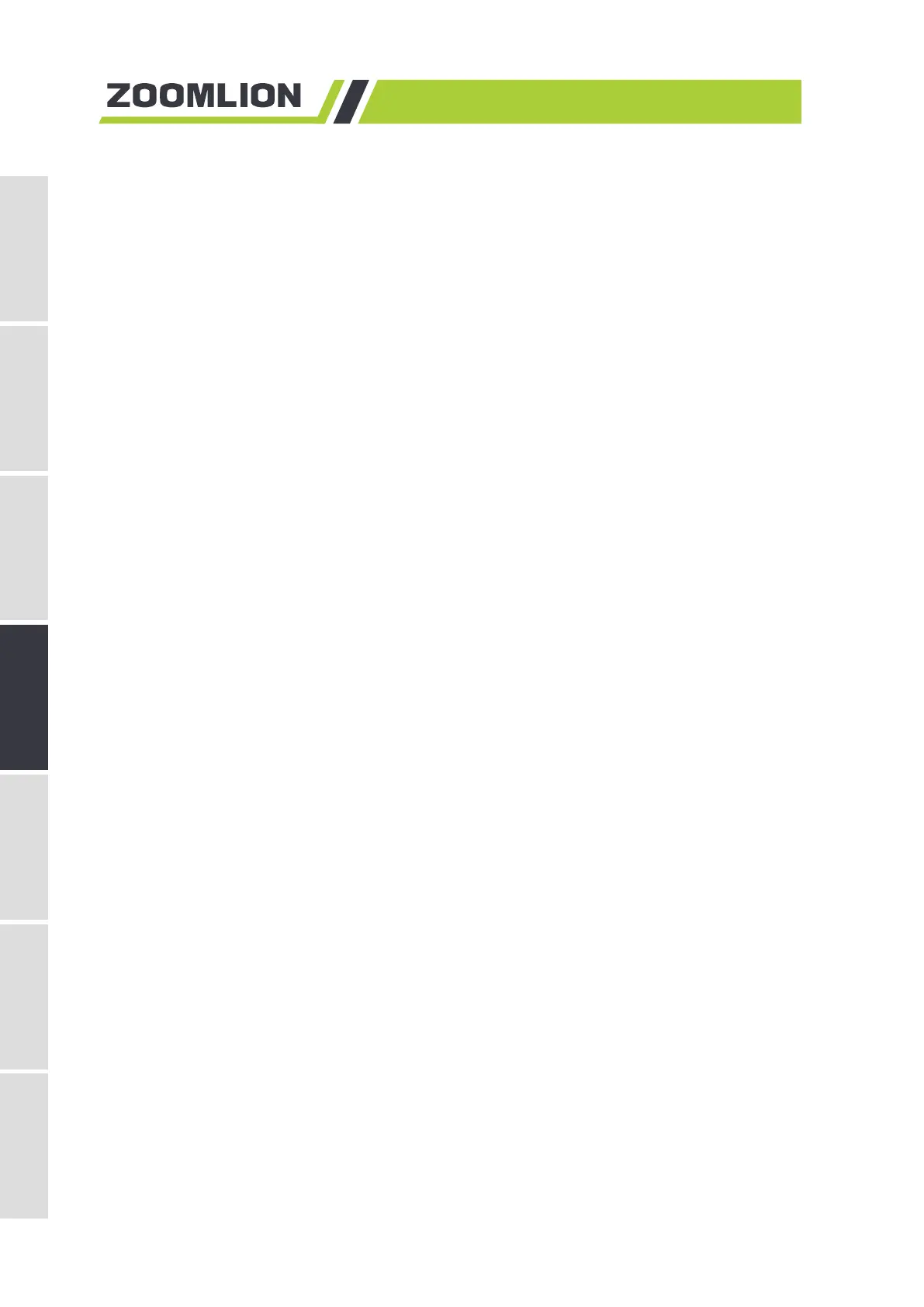Maintenance
Maintenance Manual for Crawler Crane
4.10.4 Inspection of hydraulic pipes for damage
Change the damaged pipes and fittings of hydraulic pumps on the slewing table due to
mechanical failure, heat energy or other influences. Keep enough distance between all pipes,
hoses and high-temperature engine parts (for example, turbocharger), which will not result in
friction.
4.10.5 Inspection of hydraulic cylinder
Inspect the cylinders of all auxiliary equipments regularly, including:
a) Inspect whether there exists scratch on piston rod;
b) Inspect whether the sealing between piston rod and the cylinder leaks oil when doing the
corresponding auxiliary movements;
c) Inspect whether the piston rod of the cylinder curves when the cylinder has a long stroke.
If the part between piston rod and cylinder leaks, please ask the manufacturer or professional
maintenance personnel to repair it. Try not to make the piston rod scratch. When severe
scratch of piston rod leads to leakage of oil, please ask the manufacturer or professional
maintenance personnel to repair it. If repair is impossible, change it. If the piston rod is too
curved to work properly, please ask the manufacturer or professional maintenance personnel to
replace it.
Pay attention to the following terms when using or transporting hydraulic cylinder:
a) Package the cylinder during storage and transportation. Protect the connection surface of
oil port and explosion part of piston rod via protective devices.
b) Secure the cylinder tightly during storage and transportation to avoid collision.
c) Secure the cylinder tightly when lifting to avoid swinging.
d) Depressurize the loop of hydraulic cylinder to zero before dismantling the hydraulic
cylinder.
e) Prevent the components of the hydraulic cylinder against damage when dismantling it.
f) Protect the external surface of the piston rod against collision and scratch on sealing
elements. Clean the dust ring of cylinder dynamic seal and the silt exposed on piston rod
frequently to prevent the impurities sticky on the surface of the piston rod, which is not
easy to clean, from entering the internal cylinder to damage the piston, cylinder or sealing
elements.
g) Inspect the connection parts such as thread, bolt frequently. Screw it tightly if any
looseness is detected.
h) Lubricate the connection parts frequently to prevent it from rusting or abnormal wear when
lacking of lubricating oil.
4-52
